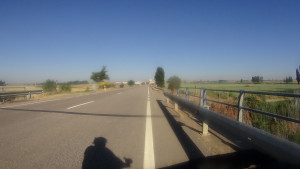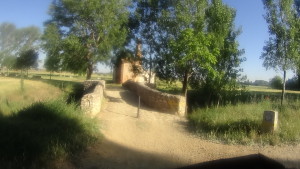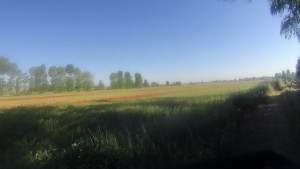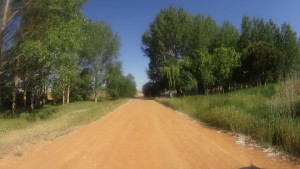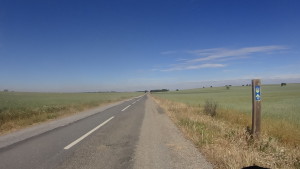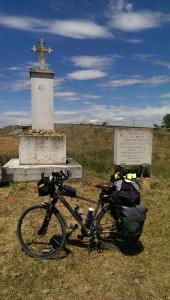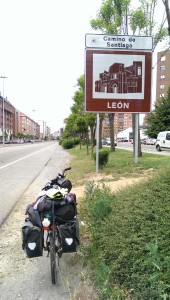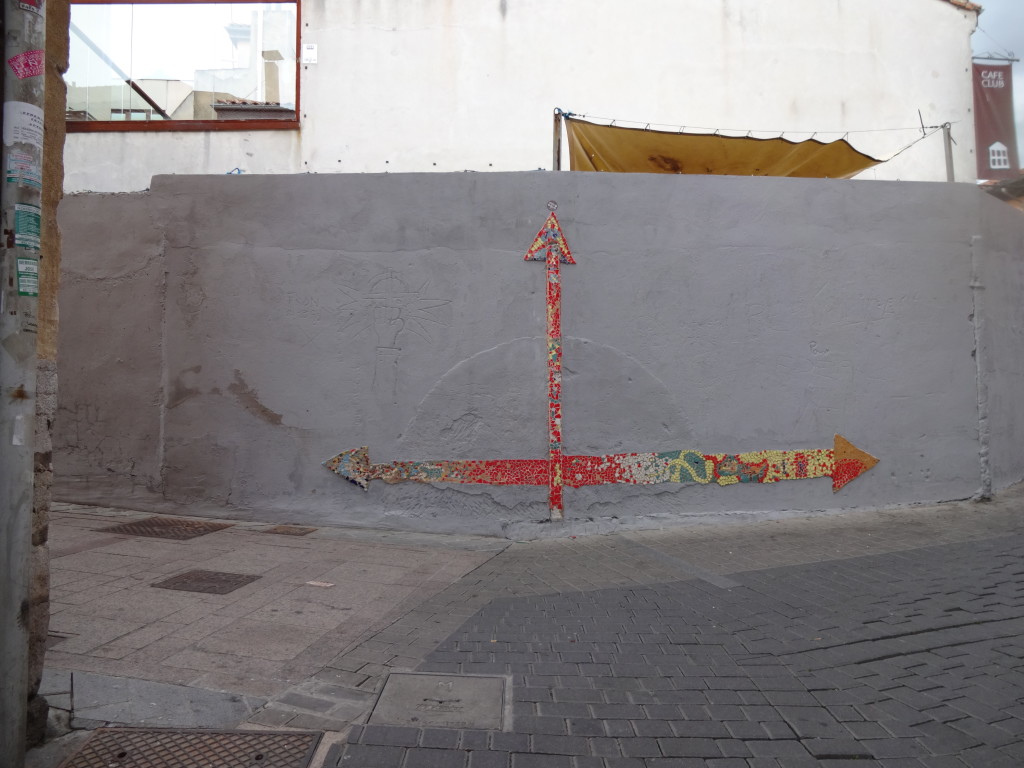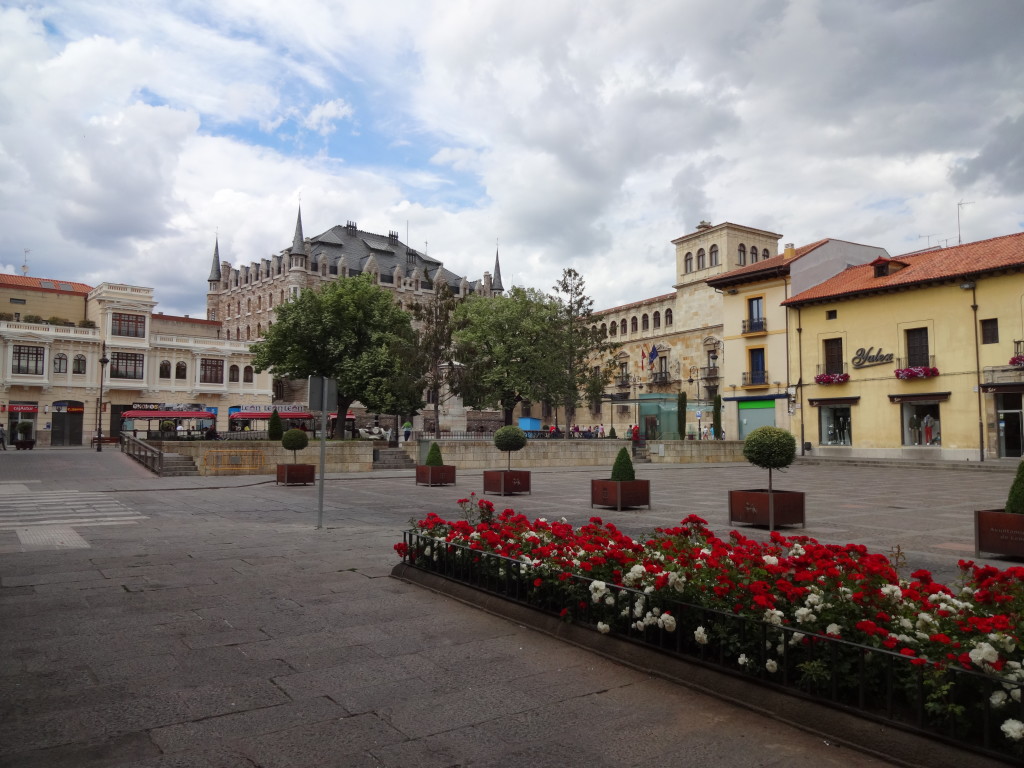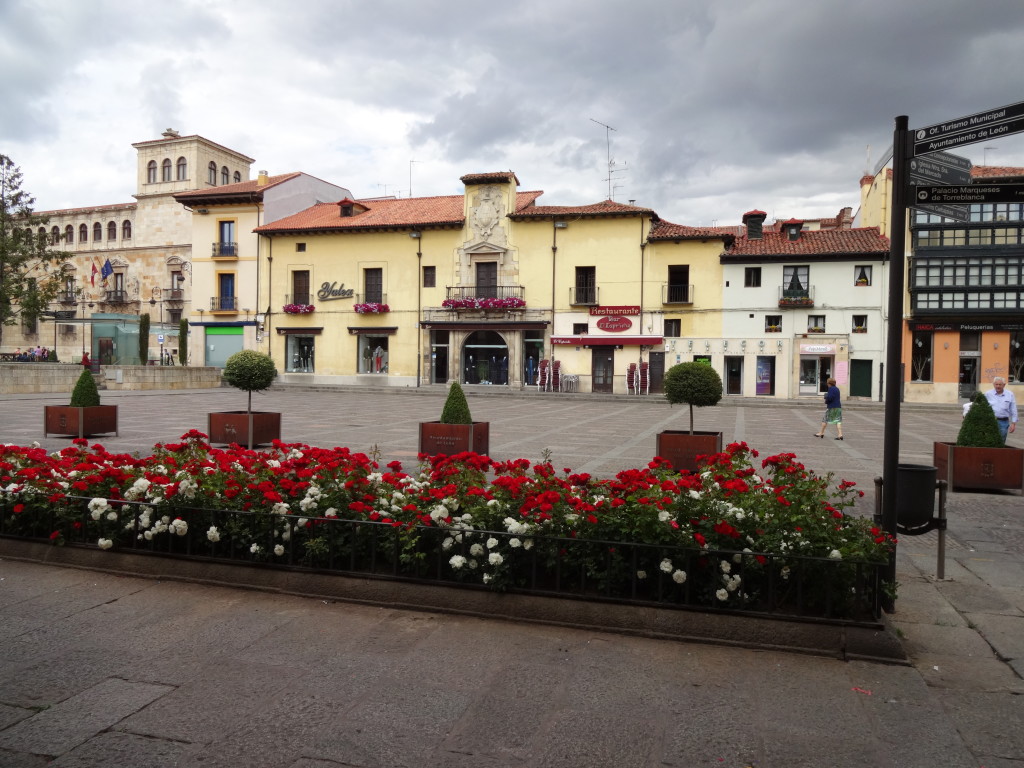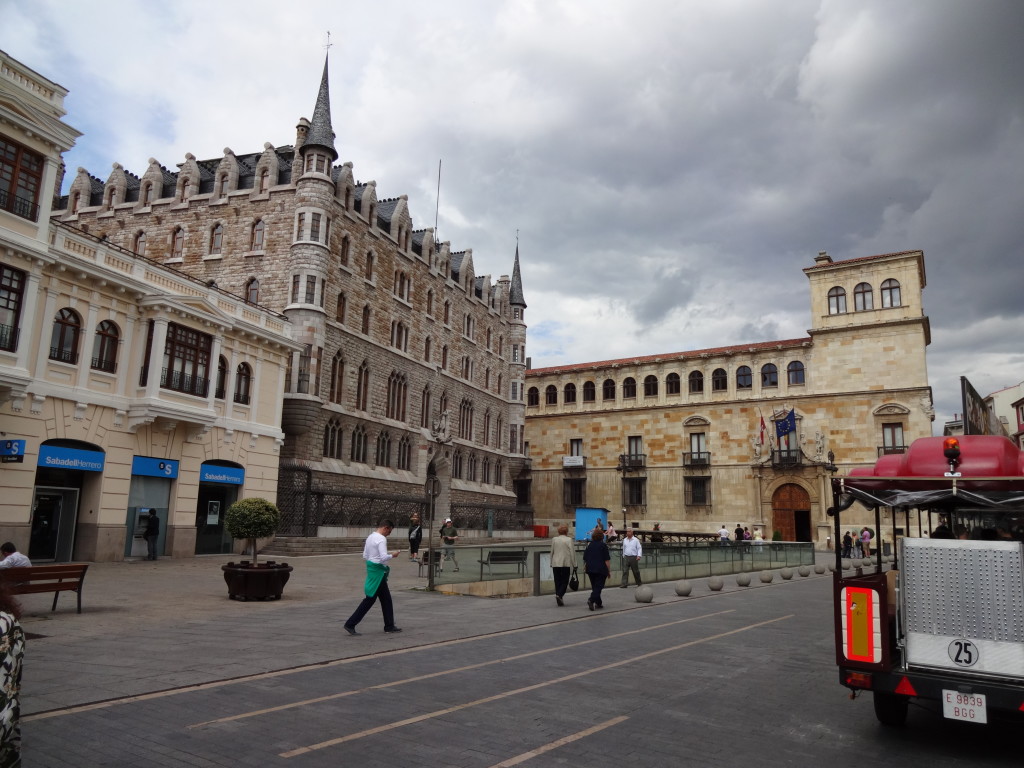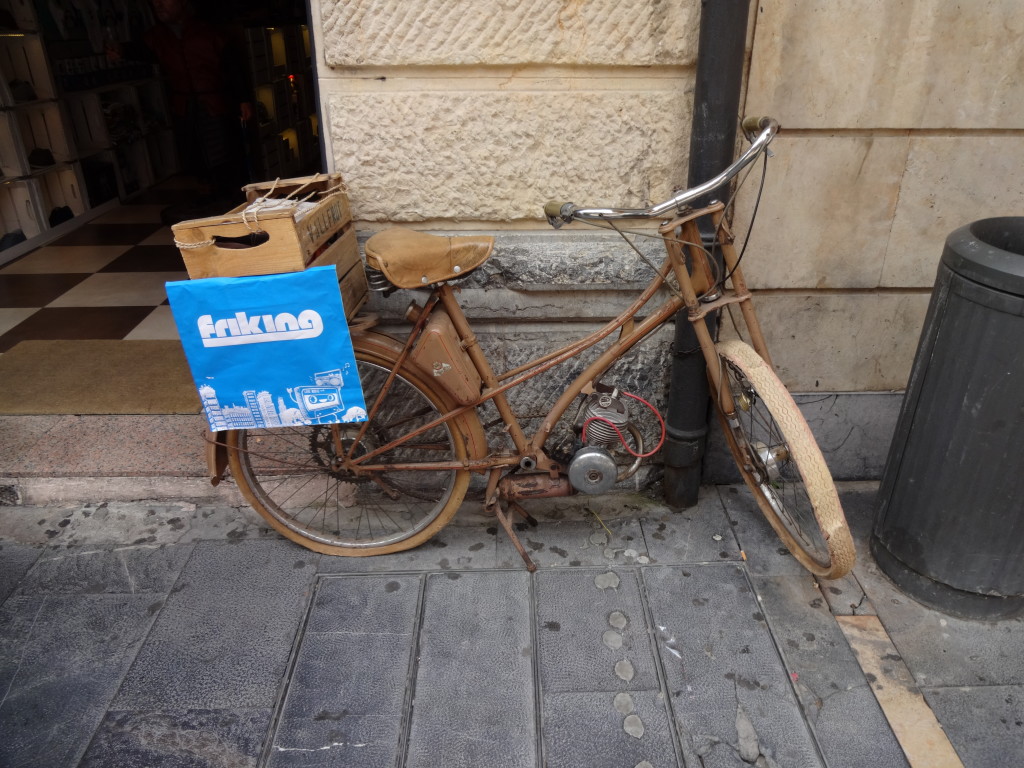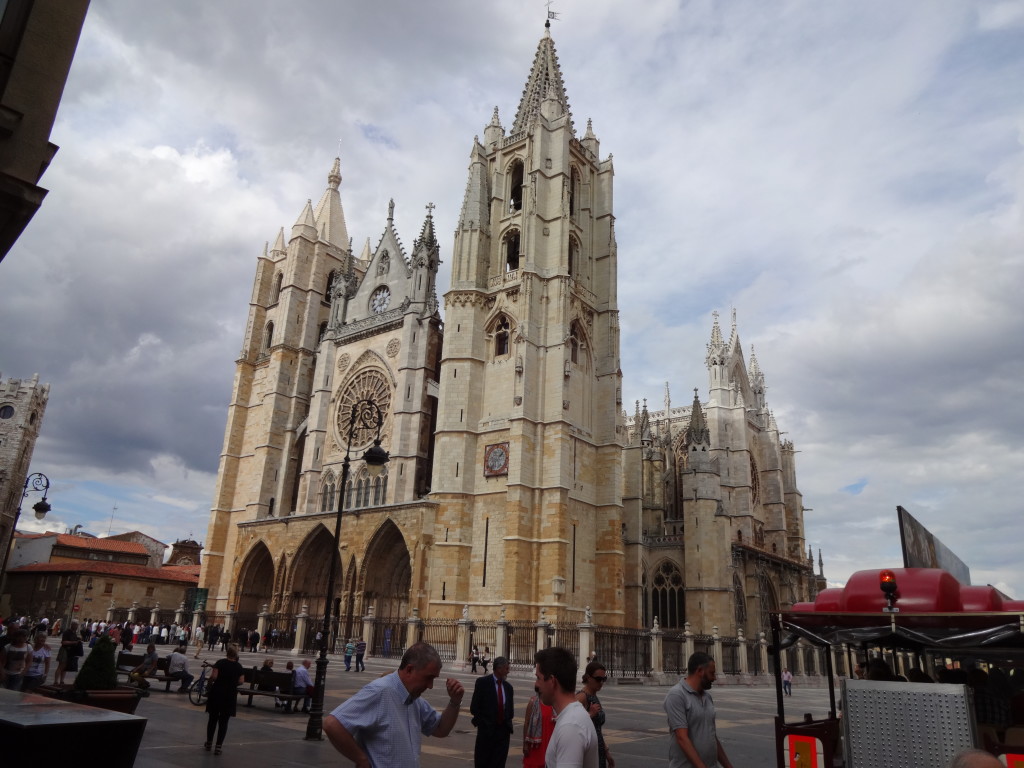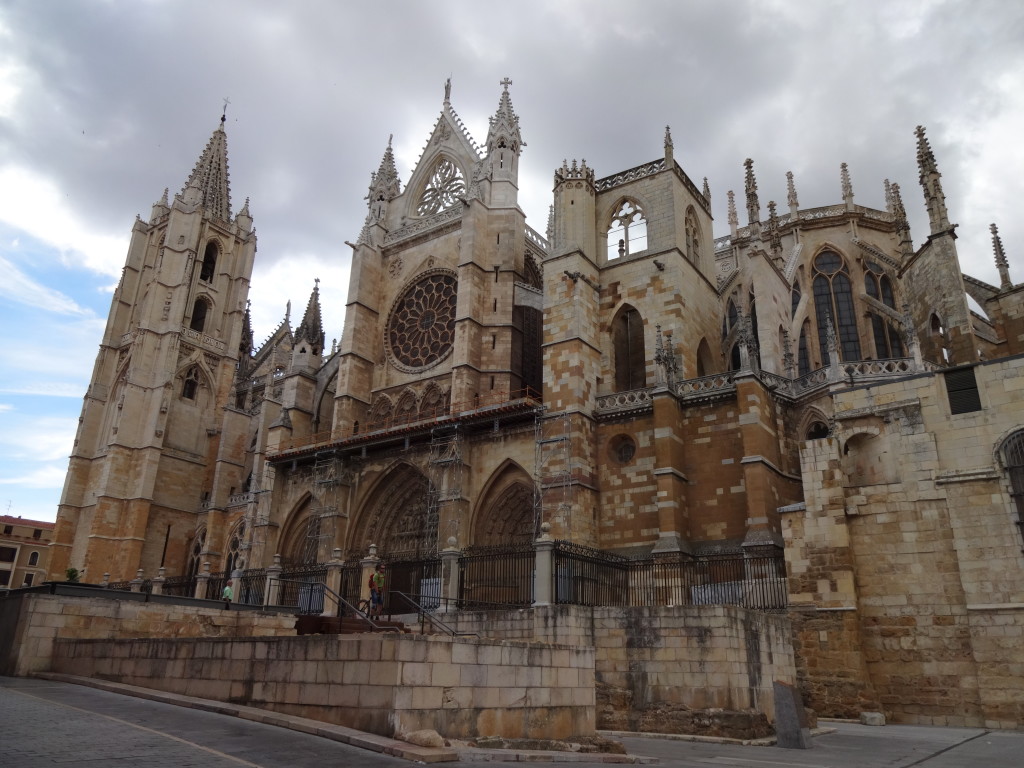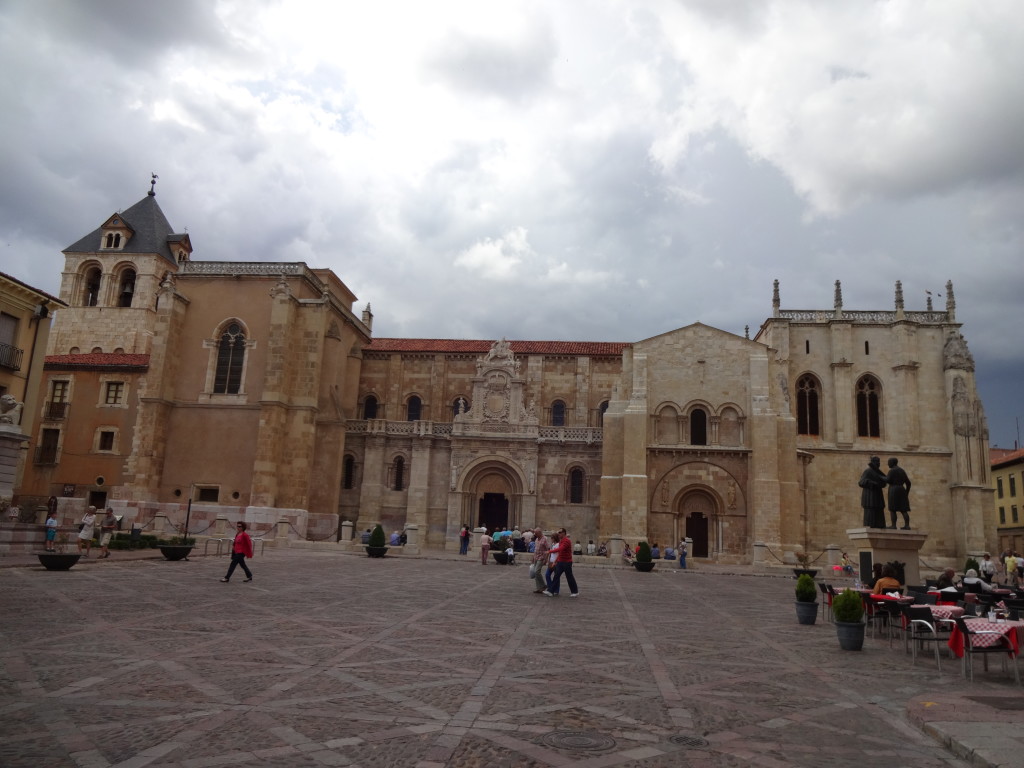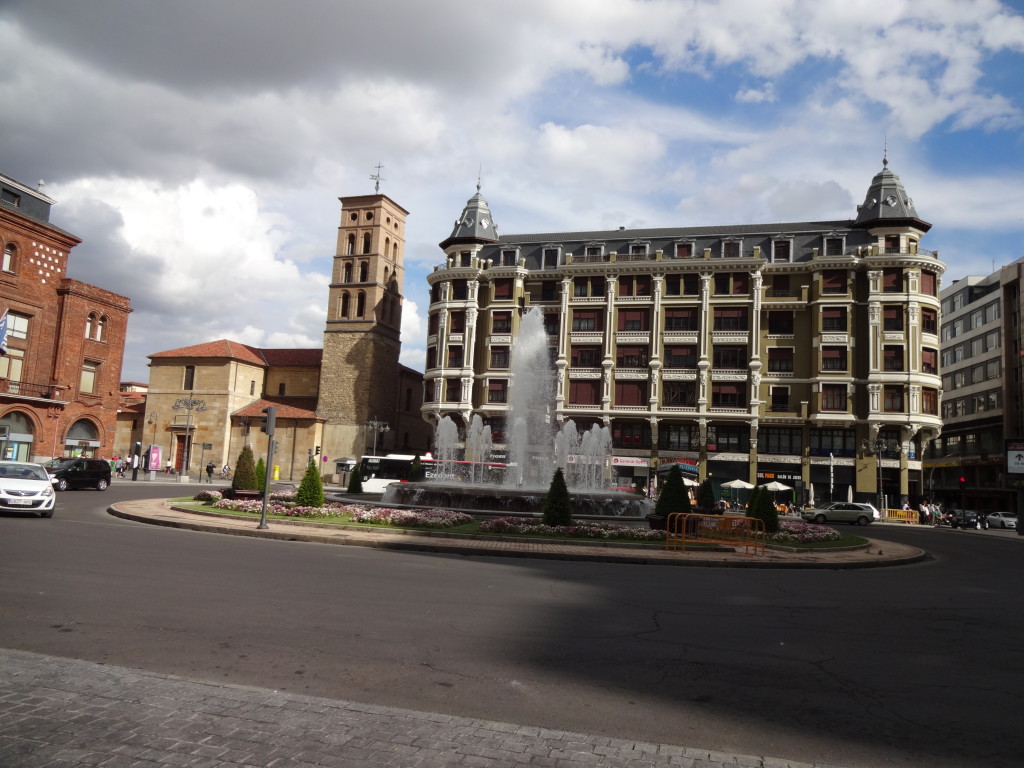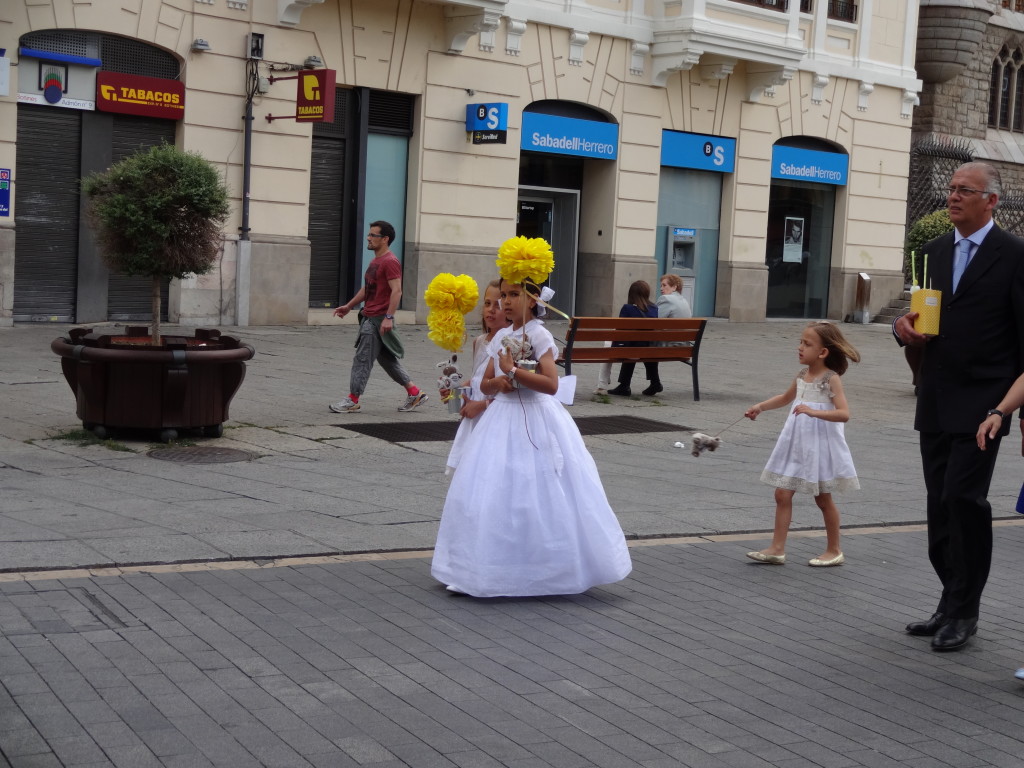
Welcome to the DAY 8 post of my Camino de Santiago Pilgrimage by bike which happened on the 1st of June 2015. I did his stage of 50 Km or 31 miles from León to Astorga in 4h and 35m, of which 3h 22m were of actual moving time.
I left the hostel at 8:01am that morning and first rode to the Cathedral. I didn´t really need to go there, but I felt compelled to take one last look at the Cathedral. As I arrived I saw a cyclist’s couple looking at a map and when I approached them I recognised they were also from Brazil.
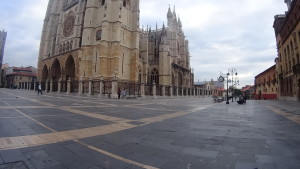
Marcelo and Alice are from a city in Brazil called Recife, the capital of the state of Pernambuco, and were also doing the Camino de Santiago. We talked for a few minutes and left together to try to find our way out of town.

Little did I know at that time that we would later arrive in Santiago de Compostela together. Our friendship started at that point and continues to this day thanks to social media and the internet.
León is a reasonably large city and it took us about 1h and 20 min to reach La Virgen del Camino, which still belongs to León’s metropolitan area and is very close to León’s airport. We stopped at a place called Cafeteria Miravalles for Breakfast and 50 min later jumped back onto our bikes again and continued to ride on the already familiar N-120. We rode on the N-120 all the way to Astorga this day.
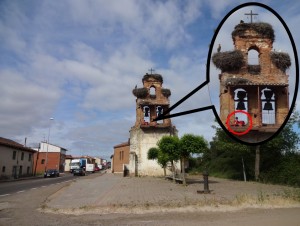
As we arrived in the village of Valverde de la Virgen we saw something interesting. Spain is filled with old bell towers (for the lack of a better name). In many of them you will find White Stork’s nests. In this particular one a pilgrim decided to stay overnight and slept with the birds.

Some pilgrims actually camp throughout the entire pilgrimage, especially those with animals, and don´t stay at hostels, like most do. I don’t know if this was the case for that pilgrim, but I thought he had chosen a very interesting place to sleep, if he managed to get any sleep at all, that is.
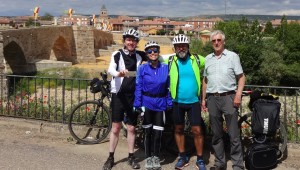
After Valverde de la Virgen we crossed through the villages of San Miguel del Camino, Villadangos del Paramo and San Martín del Camino until we arrived at yet another landmark of the Camino:
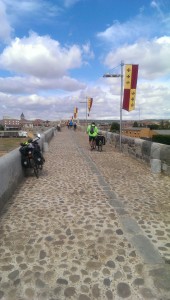
The 13th century medieval stone bridge over the river
Órbigo in the small town of Hospital de Órbigo, which owes its name to the old pilgrim’s hospital that once stud in that place. The bridge appears to be way too big for the river, but before the construction of the reservoir Barrios de Luna, the river had a great flow.
It has 19 arches and is fairly well preserved.
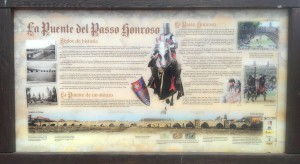
We did a small pit-stop right after the bridge for some rest and water and moved on back on the N-120. The rest of the way to Astorga was relatively uneventful.

As we arrived in Astorga Marcelo and Alice decided to stay in the Municipal Hostel straight away and I went to the town centre to find Fernando, as we had agreed to meet there and ride together the next day. Once I found Fernando we went back the municipal hostel and stayed in the same floor Marcelo and Alice were staying.
I do recommend this hostel. The overnight is 5€ and it’s clean and well organized. Most rooms have only 2 bunk beds (or 4 beds) and we shared the room with 2 pilgrims from Germany.

Be prepared for walking up quite a few stairs if you, like us, stay on the upper floor (the bikes stay in the basement). The view from our room was great though. The hostel had a fully fitted kitchen and a laundry with a drying area outside on the rear garden.

After a shower we left the hostel to explore the town. Astorga is great place, with an especially interesting architecture. I know I wrote this before, but although the town is small it feels big and welcoming and has a very long history as it pre-dates León by 875 years. According to Wikipedia, artefacts dated 2750 BC were found in the area of Astorga. The local Celtic people, known as the Astures and the Cantabri, inhabited the area around 275 BC, which later in 146 BC became one of the Roman strongholds in the region called Asturica.
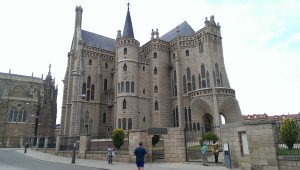
As in many Spanish towns Astorga has a great Cathedral, but it also has the Episcopal Palace of Astorga, which was a building designed and partially built by Gaudi, the same architect who design the famous Sagrada Familia Cathedral in Barcelona. The building now houses a museum of religious art called “Museo de los Caminos”, dedicated to the Camino de Santiago.
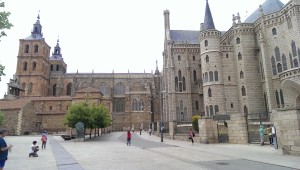
As we were exploring the town, the 4 of us, Fernando, Marcelo, Alice and me, decided not to eat in a restaurant that night, but to buy food in the local market and cook it in the hostel’s kitchen. Marcelo is the chef and owner of several well-known restaurants in his home city and, obviously an excellent cook. We had a great time preparing and enjoying the food that evening, together with the other Pilgrims there, all accompanied by good Galician wine.
Well, that’s it for day 8. Please feel free to leave comments, questions or at least indicate if you liked it or not by clicking on the stars in the bottom of the post.
Thank you!



